About the Unit
- In this unit, students will learn about many things around them — how different things work and how they are made.
- Students will play and explore with simple toys like spinners and paper boats.
- They will try different things with these toys to see how they work. They will also test which things sink or float by putting them in water.
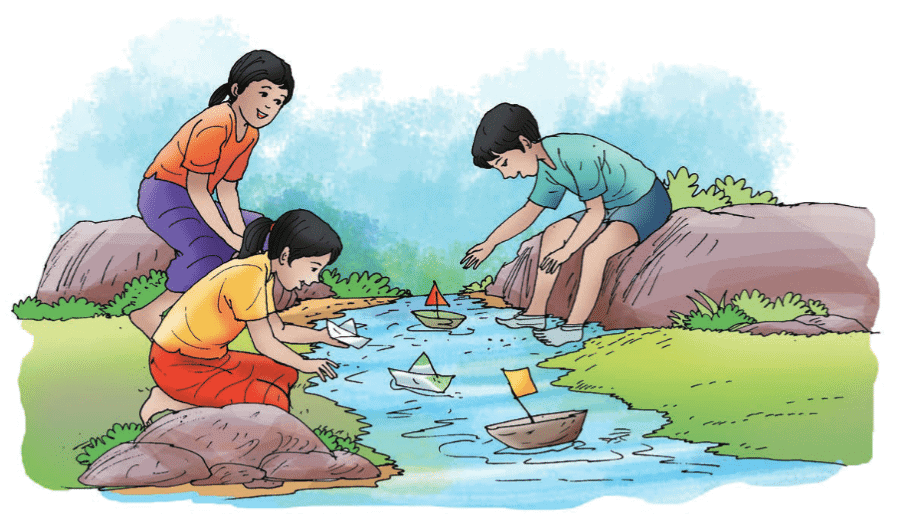
- They will learn to make handmade paper and also how machines make paper in big factories. They will discover how paper can be colored too.
- This unit also teaches students about caring for the environment by using the 5Rs of waste management: Refuse, Reduce, Reuse, Repurpose, and Recycle.
- By trying both old and new ways of making paper, students will understand and appreciate the things we use every day and how they connect to nature.
Introduction
We use many things every day like pencils, bags, coins, and toys. Have you ever thought about why they move or do certain things? Meera and Dhruv are two kids who want to know how spinning coins and paper boats float.
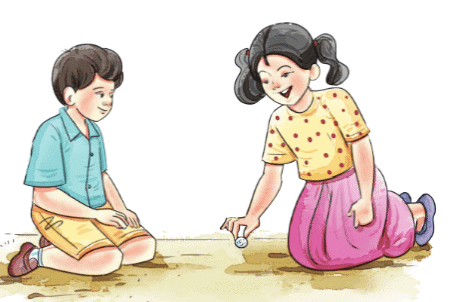
Let’s learn about things that spin and why some things float on water while others sink.
Spinning Objects
Spinning means something turning in circles, like a coin or a top. Meera and Dhruv noticed how different objects spin and what helps them spin effectively.
- Some objects, like coins and bangles, spin well, while others, like erasers, do not spin properly.
- When a coin spins, it gradually slows down, shakes, and stops because it loses balance.
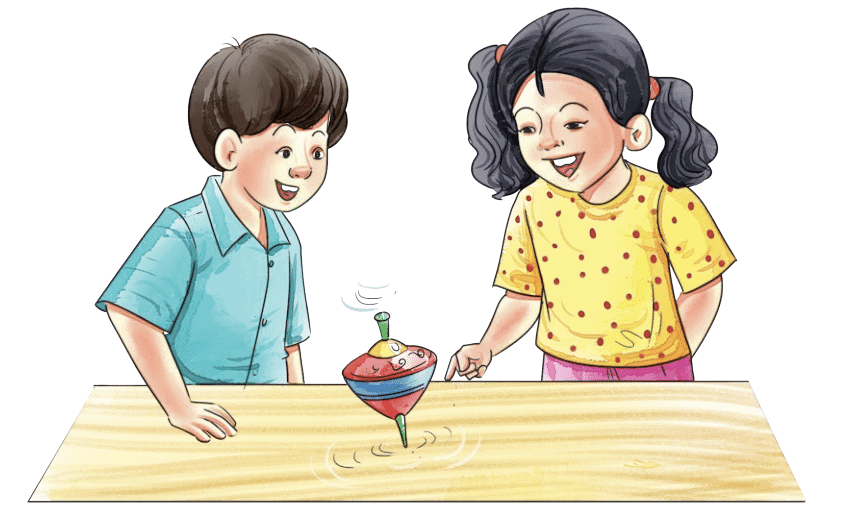
Did You Know?
Spinning tops have been used in India for thousands of years, originally made of clay. Lattu is a popular Indian top, commonly crafted from wood.
- A square spinner appears circular when it spins quickly because the edges blur.
- What happens to the colours on the spinner when it is painted with different colours and then spun?
- Other spinning items include ceiling fans and potter’s wheels.
Question for Chapter Notes: How Things Work
Try yourself:
What do Meera and Dhruv observe about spinning objects?Explanation
Meera and Dhruv noticed how different objects spin and what helps them spin effectively.
Some objects, like coins and bangles, spin well, while others, like erasers, do not spin properly.
Report a problem
Did You Know?
A charkha (spinning wheel) twists cotton fibre into thread. It has a large wheel that spins when turned by hand. Mahatma Gandhi used the charkha to make handmade clothes.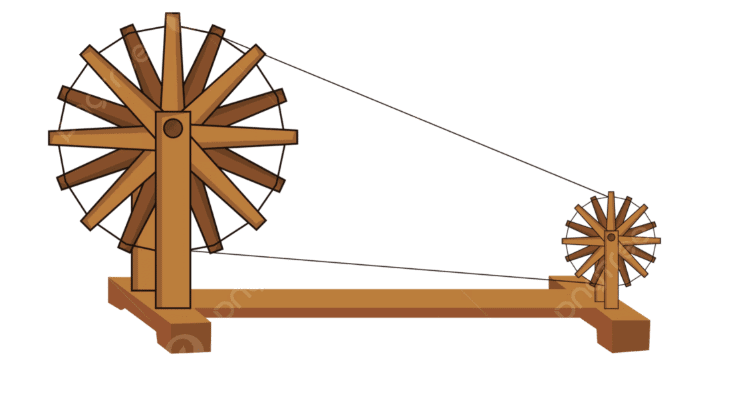
Floating and Sinking
Floating is when something stays on the water's surface, while sinking means it goes below the surface. Meera and Dhruv played with paper boats and saw that some floated well, while others turned over.
They created paper boats and placed them in the water puddle formed by the rain. While playing, they noticed that some paper boats floated properly, while others turned over.
Try it yourself:
Make a paper boat at home. Float it in a bowl of water.
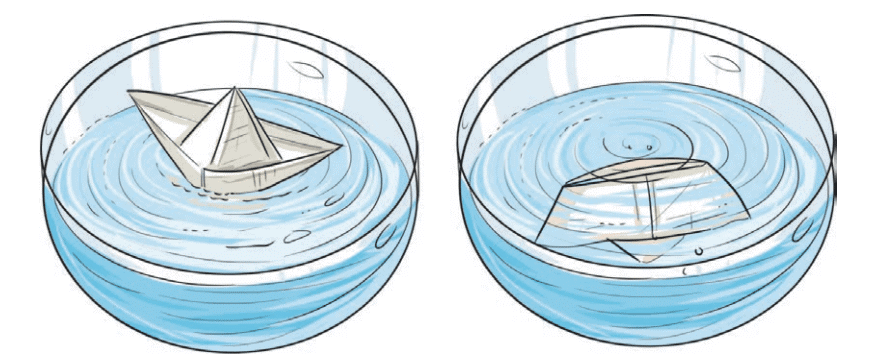
- The ability to float or sink is not only based on weight; other factors are also important.
- Not every light object floats, and not all heavy objects sink. For instance, a heavy empty bowl can float as it holds air.
- The shape of an object influences whether it floats or sinks.
Let’s Test What Floats and What Sinks
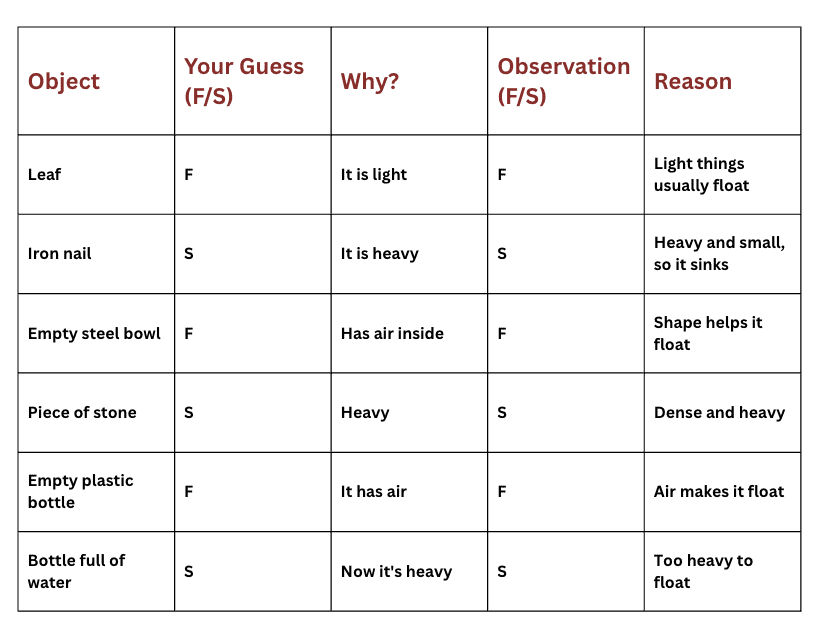
From this activity, it can be observed that some heavy objects like iron nails sink, while lighter ones like leaves float.
Do All Heavy Things Sink?
We cannot decide if something will float or sink just by checking if it is heavy or light.
Other things like its shape and what it is made of also matter.
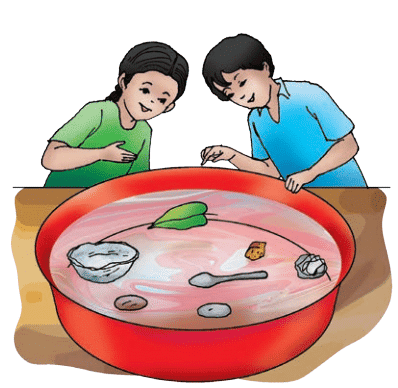
Let’s Test with Aluminium Foil
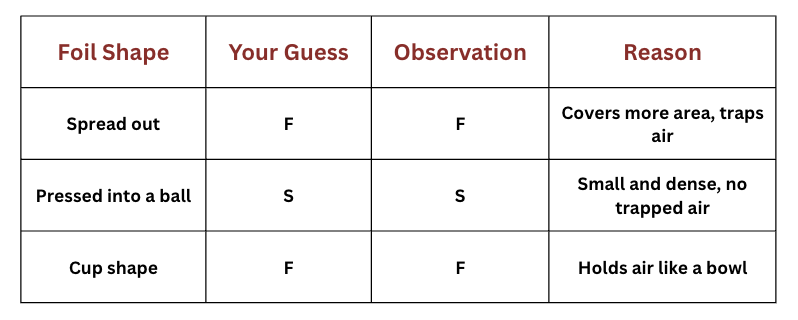
- Aluminium foil spread out or shaped like a cup can float because it holds air.
- However, when the aluminium foil is tightly pressed into a ball, it will sink as it is denser and holds less air.
Question for Chapter Notes: How Things Work
Try yourself:
What happens to a coin when it spins?Explanation
When a coin spins, it gradually slows down, shakes, and eventually stops because it loses balance.
Report a problem
Balance of Boat!
- Boats float better when they are balanced and robust. A well-designed boat remains upright and does not tip over.
- Consider how you could make something that floats sink and something that sinks float.
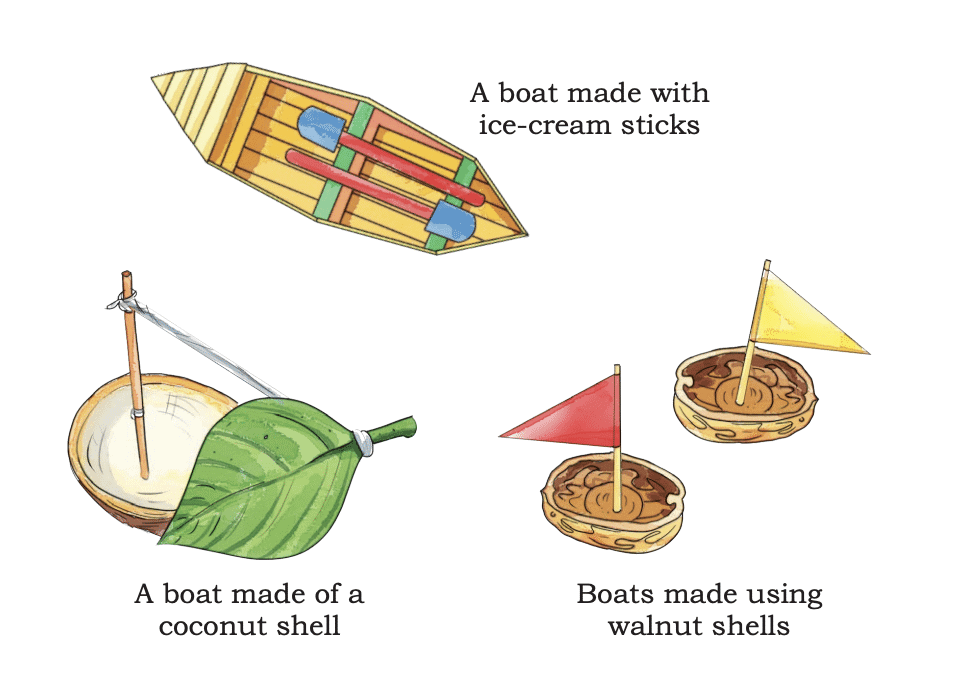
- Examples of objects:
- Things that float: thermocol, cork, leaf, wax, ice-cube, pumpkin, lemon.
- Things that sink: marble, coin, spoon, candle, potato, tomato.
Try this activity with your friends and compare your boats. Use different materials to make the boats and explore through experiments.
Some boats may be strong and not break easily, while others may break quickly. Some may fall over easily, while others stay balanced. Think about ways to make your boat better.
Difficult Words
- Spinner: A tool designed to investigate spinning movements, like a top or various handmade spinners.
- Balance: When an object remains steady and does not fall over.
- Charkha: A wheel for turning cotton into thread, famously used by Mahatma Gandhi for making traditional clothing.
- Lattu: An ancient Indian spinning top crafted from wood or clay, used for thousands of years in India.
- Float: To remain on the surface of water.
- Sink: To descend below the surface of water.
- Dense: Something that is closely packed and heavy for its size.



























